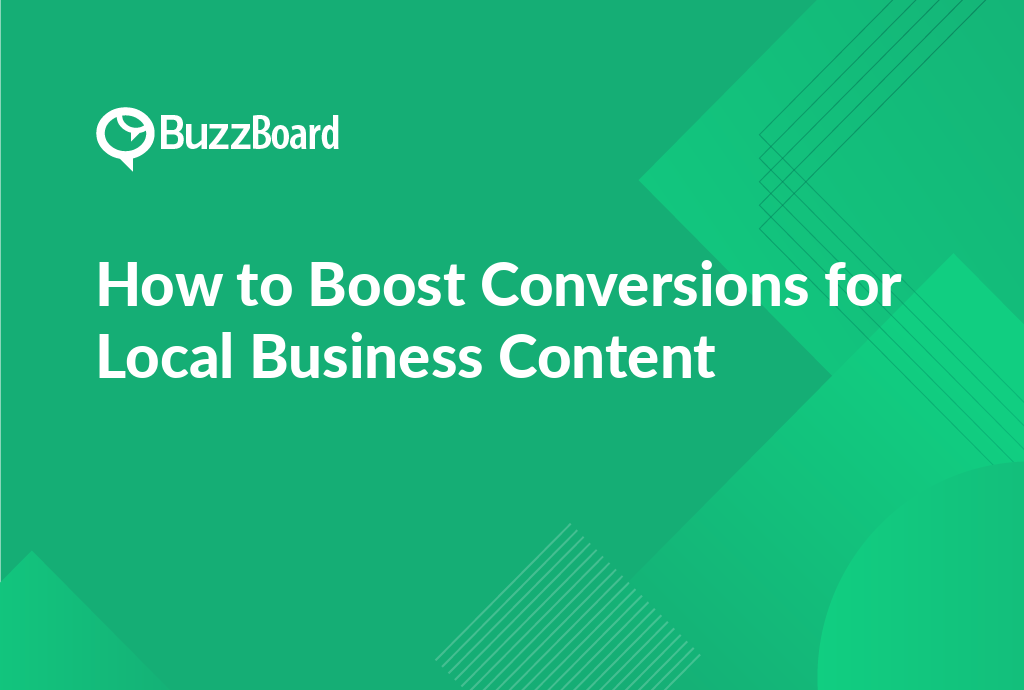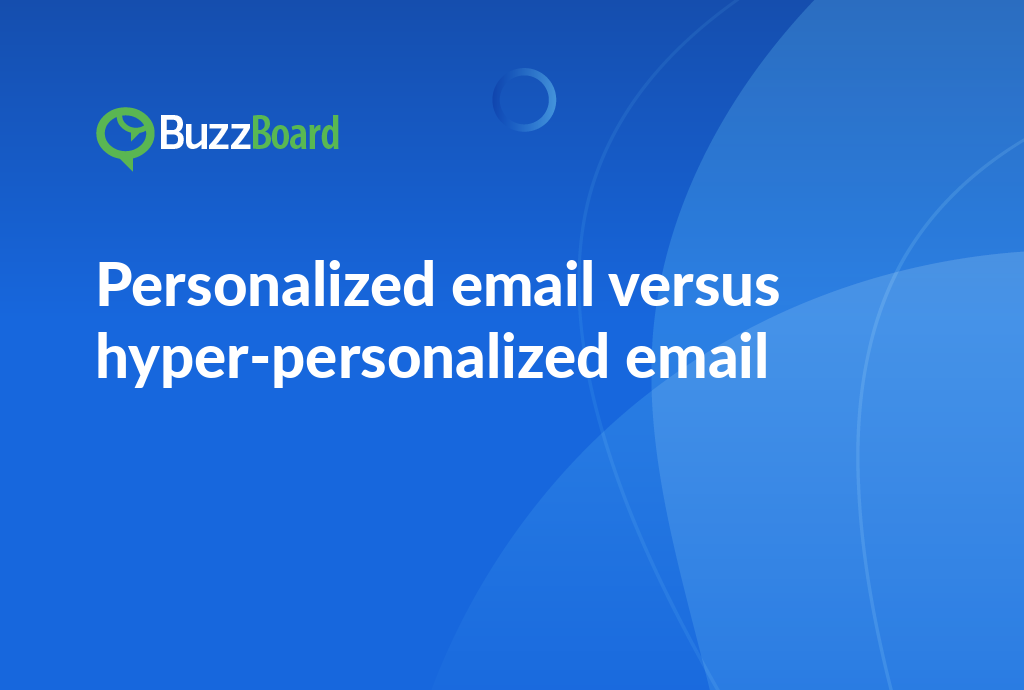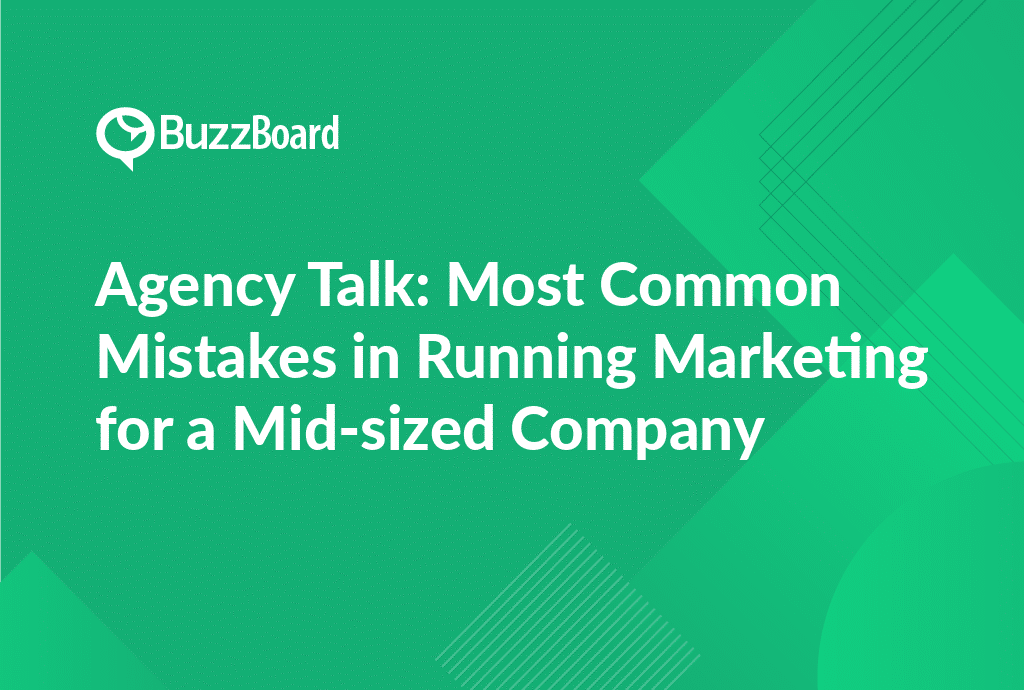How to Boost Conversions for Local Businesses: Expert Tips
Boosting conversions for local businesses requires a strategic approach to content marketing. According to experts, the key is to create content that resonates with your target audience, leveraging local SEO tactics and optimizing for user experience. This article provides actionable tips on how to increase conversions for local businesses, including optimizing website content, leveraging customer reviews, and utilizing location-based keywords. By implementing these strategies, local businesses can drive more sales, improve customer engagement, and establish a strong online presence.
How Can Call-to-Action in Local Business Content Enhance Conversion Rates?
The digital marketing landscape remains consistently competitive. Therefore, businesses are perpetually hunting for convincing strategies to stand out—one of these strategies is improving content for local businesses to increase conversions.
One of the most effective ways to accomplish this goal is by leveraging powerful call-to-action (CTAs). A well-constructed CTA serves as a deciding factor in a potential customer’s decision— making it a crucial component that transforms a lead into a paying consumer.
In the context of local business content, CTAs (calls-to-action) play a crucial role in driving conversions and ultimately, guaranteeing a positive return on investment (ROI). Their primary function is to incite the reader to take immediate action, whether that action entails downloading an eBook, subscribing to a newsletter, or contacting the business for more information. By incorporating CTAs into local business content, digital marketing agencies can significantly influence conversions and boost the overall success of their digital marketing strategies.
The key to an effective CTA lies in its relevancy. A CTA’s power is amplified when it aligns with the previous content and fits within the overarching content strategy. It must be designed to guide potential customers to what they’re most interested in or what they need next. This means that CTAs should be carefully crafted to resonate with the target audience and address their specific needs and pain points.
Crafting a best-in-class CTA extends beyond merely penning instructions. The message must be clear, concise, and incite urgency, while also offering value to the visitor. Why should the visitor take action? What’s in it for them? A well-crafted CTA should provide a compelling reason for the visitor to take the desired action, whether that’s to download a resource, sign up for a newsletter, or schedule a consultation.
Moreover, targeted, personalized content is more likely to convert. Therefore, digital marketing agencies must tailor their local business content to address the specific needs of their audience, and CTAs should be no exception. By understanding the target audience’s pain points, interests, and goals, agencies can create CTAs that resonate with them and encourage them to take action.
When executed correctly, CTAs can exponentially increase conversions for local business content and boost the overall success of any digital marketing scheme. By incorporating CTAs into their content strategy, agencies can:
- Drive more conversions and leads
- Increase engagement and interaction with the target audience
- Boost the effectiveness of their digital marketing campaigns
- Improve the overall return on investment (ROI) of their marketing efforts
In short, CTAs are a powerful tool for driving conversions and increasing the effectiveness of local business content. By crafting clear, concise, and relevant CTAs that align with the target audience’s needs and pain points, digital marketing agencies can significantly boost their conversions and ultimately, guarantee a positive return on investment (ROI).
What Role Does a Strong Content Strategy Play in Boosting Conversions for Local Business Content?
A robust content strategy is a crucial component of a successful marketing strategy for local businesses. A well-crafted content strategy can propel conversions to new heights by shaping the voice of the business, fostering unique and compelling narratives, and attracting potential customers. At its core, a content strategy is designed to grab the attention of the target audience by offering value first. This means creating content that resonates with the audience, whether it’s through blog posts, videos, webinars, infographics, or podcasts.
The key to boosting conversions lies in discerning what kind of content thrills the audience. This requires a deep understanding of the target audience’s needs, preferences, and pain points. By creating content that addresses these needs, local businesses can establish themselves as thought leaders in their industry and build trust with their audience. Consistency is also crucial, as it ensures that the content consistently meets the demand of the audience.
Another essential element of a content strategy is the use of clear and compelling calls-to-action (CTAs). CTAs guide potential clients on the next actions they should take after consuming the content, whether it’s subscribing to a newsletter, scheduling a consultation, or making a purchase. A well-crafted CTA can create a sense of urgency and enthusiasm, directing the audience toward conversion from readers to potential customers.
In addition to boosting conversions, a comprehensive content strategy can also enhance online visibility for local businesses. By prioritizing SEO, local businesses can ensure that their content is optimized for search engines, elevating their Google rankings and increasing their online visibility. This increased visibility is likely to generate more traffic and result in greater conversions.
Furthermore, a content strategy is not merely beneficial for conversions but also crucial for sustaining customer loyalty. Quality, value-laden content can help local businesses retain a loyal market following. This continuous engagement increases the chance that repeat clients will promote the brand, fueling the cycle of exposure, engagement, and conversion.
A potent content strategy is a powerful tool for local businesses looking to amplify their online visibility, boost conversions, and maintain a devoted consumer base. By offering value, creating compelling CTAs, prioritizing SEO, and focusing on customer loyalty, local businesses can optimize the return on investment (ROI) for their marketing initiatives. A well-crafted content strategy can help local businesses stand out in a crowded digital landscape, drive growth, and achieve long-term success.
Some key takeaways from this comprehensive content strategy include:
- Understanding the target audience’s needs, preferences, and pain points is crucial for creating content that resonates with them.
- Consistency is key to creating a loyal following and driving conversions.
- Clear and compelling CTAs are essential for guiding potential clients toward conversion.
- Prioritizing SEO is critical for enhancing online visibility and driving traffic.
- Focusing on customer loyalty is vital for sustaining a loyal market following and driving repeat business.
- A comprehensive content strategy can help local businesses optimize the ROI for their marketing initiatives and achieve long-term success.
By incorporating these key takeaways into their content strategy, local businesses can drive growth, increase conversions, and maintain a devoted consumer base.
Analyzing the Direct Relationship Between ROI and Conversions in Local Business Content
It is crucial to recognize the direct correlation between Return on Investment (ROI) and conversions, particularly for local business content. Boosting conversions is not merely about generating sales; it’s about delivering value and meeting the specific expectations of your target audience. This requires a deep understanding of your local market dynamics and the development of personalized content strategies that resonate with your customer base.
One of the most critical factors in optimizing conversions is the implementation of effective calls-to-action (CTAs). When skillfully incorporated into your content, CTAs can significantly augment the productivity of your digital marketing strategies, encouraging readers to interact directly with your content and proceed down the sales funnel. This, in turn, can lead to increased conversions, which are a tangible and measurable indicator of the success of your marketing efforts.
However, it is essential to remember that enhancing conversions for local business content does not come with a one-size-fits-all solution. Local businesses require personalized content strategies that take into account the unique characteristics of their target audience, market dynamics, and competitive landscape. This means that a cookie-cutter approach to content marketing is unlikely to yield the desired results.
A well-crafted content strategy can exponentially enhance a digital marketing campaign’s ROI by incorporating multiple elements, such as:
- Pinpointing the target audience: Understanding your target audience’s demographics, preferences, and pain points is crucial in developing content that resonates with them.
- Selecting the right marketing channels: Choosing the most effective marketing channels to reach your target audience, such as social media, email, or search engine optimization (SEO), is vital in maximizing your ROI.
- Ensuring a balanced mix of content types: A mix of blog posts, videos, infographics, and other content types can help keep your audience engaged and interested in your brand.
- Timing: Timing is everything in content marketing. Publishing content at the right time can help increase engagement and conversions.
- Crafting captivating CTAs: Effective CTAs can encourage readers to take action, whether it’s signing up for a newsletter, downloading an e-book, or making a purchase.
Scrutinizing the correlation between ROI and conversions is vital in justifying your agency’s marketing endeavors to local businesses. Conversions epitomize tangible, measurable results that local companies can effortlessly link to increased sales, customer retention, and potential market growth. Simultaneously, ROI aids in demonstrating the effectiveness of your digital strategies, thus affirming that marketing dollars are being utilized judiciously.
Harmonizing ROI and conversions is not just about measuring marketing results; it’s about reassuring local businesses that their marketing budget is producing visible advantages. It’s about affirming that with a competent digital marketing partner, even a small local business can witness substantial growth. By focusing on ROI and conversions, local businesses can make data-driven decisions that drive real results, ultimately leading to increased revenue and market share.
In conclusion, optimizing conversions for local business content requires a deep understanding of the target audience, market dynamics, and the development of personalized content strategies that resonate with the customer base. By incorporating effective CTAs, pinpointing the target audience, selecting the right marketing channels, ensuring a balanced mix of content types, timing, and crafting captivating CTAs, local businesses can exponentially enhance their digital marketing campaign’s ROI and drive tangible, measurable results.
The Significance of a Well-Designed CTA in Improving Conversions for Local Business Content
Boosting conversion rates is often the top priority for digital marketing agencies partnering with local businesses. A critical function in this process is designing a compelling call-to-action (CTA) that can significantly enhance conversions for local business content. A well-crafted CTA is essential for guiding prospective customers through the sales funnel, ultimately driving revenue and growth for local businesses.
So, why is a CTA crucial? A strategic CTA paves the way for prospective customers to connect with a company, serving as a key element in your content strategy. When executed properly, a CTA can considerably uplift your conversions and strengthen your client’s return on investment (ROI). A CTA can be used to guide customers to subscribe to a blog, purchase products, complete contact forms, or take other desired actions. By incorporating a CTA into your content, you can encourage customers to engage with your brand, build trust, and ultimately drive conversions.
To develop a persuasive CTA, it needs to be conspicuous, succinct, and engaging. A CTA should be designed to create a sense of urgency, motivating immediate action. This can be achieved by using action-oriented language, such as “Sign up now” or “Limited time offer.” Additionally, tailoring CTAs based on users’ behaviors, locations, or preferences can amplify its impact, leading to increased conversions. For example, a CTA that targets users who have abandoned their shopping carts can be designed to offer a discount or promotion to encourage them to complete their purchase.
Assessing CTA performance through A/B testing is essential. Being open to experimenting with various CTA designs, placements, or texts, you can optimize CTAs to cater better to your audience. In-depth analysis aids in formulating CTAs that nurture relationships and boost conversions. By testing different CTAs, you can identify which ones resonate best with your target audience and adjust your strategy accordingly.
In addition to A/B testing, it’s also important to consider the following best practices when designing a CTA:
- Use clear and concise language: Avoid using jargon or overly technical terms that may confuse your audience.
- Make it prominent: Use visual elements, such as buttons or banners, to make your CTA stand out on the page.
- Use social proof: Incorporate customer testimonials, ratings, or reviews to build trust and credibility.
- Create a sense of urgency: Use limited-time offers, scarcity, or countdown timers to encourage immediate action.
- Use contrasting colors: Use colors that contrast with the surrounding design to make your CTA stand out.
In essence, a strategic CTA is instrumental in enhancing conversions for local business content. It serves as a milestone in your customer’s journey, prompting crucial actions, which result in a higher ROI for your clients. By designing a compelling CTA that resonates with your target audience, you can drive conversions, build relationships, and ultimately drive revenue and growth for local businesses.
Understanding the Metrics Behind Conversions: A Crucial Aspect of Local Business Content
Understanding the metrics behind conversions is a crucial aspect of developing a successful local business content strategy. The ability to harness these metrics significantly influences the effectiveness of a content strategy, and for agencies, this comprehension offers powerful insight that can aid in promoting their services to small businesses, consequently enhancing conversions for local business content.
One remarkable facet in this marketing spectrum is the utilization of CTAs (Calls-to-Action). A CTA is a critical component of any digital marketing endeavor, serving as your business’s ability to influence your audience into taking action. This may range from signing up for a webinar, subscribing to a newsletter, making a purchase, or even downloading an e-book. Pairing keywords with CTAs often yields better conversions, as it builds an enticing pathway that the audience finds difficult to resist. By incorporating CTAs strategically throughout your content, you can encourage your audience to take specific actions, ultimately driving conversions.
Actions taken by your audience, such as likes, shares, clicks, or page views, are categorized as conversions. The effectiveness of your local business content is frequently gauged by these conversion rates. In essence, conversions serve as tangible evidence that your content is engaging enough to compel the audience to act. By tracking and analyzing conversion rates, you can identify areas for improvement and optimize your content strategy to better resonate with your target audience.
Why is conversion crucial? It’s because it’s a direct reflection of ROI (Return on Investment). Understanding how the combination of CTA placement and language influences conversions offers insight for content optimization, which aims at higher ROI. By optimizing your content for conversions, you can increase the likelihood of generating revenue and achieving your business goals.
Optimizing your local business content strategy for higher conversions involves using your analytics to segment your audience and comprehend their needs. By tailoring your content directly to appeal to your target audience, you can increase engagement and drive conversions. This strategy, coupled with clear, compelling CTAs, has a favorable impact on your conversion rates.
To further optimize your content strategy, consider the following best practices:
- Use clear and concise language in your CTAs to ensure that your audience understands what action you’re asking them to take.
- Place CTAs strategically throughout your content, such as at the end of a blog post or in a video description.
- Use social proof, such as customer testimonials or reviews, to increase trust and credibility with your audience.
- A/B test different CTA variations to determine which performs best with your audience.
- Use urgency tactics, such as limited-time offers or scarcity, to encourage your audience to take action.
Selling digital marketing services to small businesses necessitates a firm understanding of conversion metrics. This understanding, when combined with an effective content strategy, can significantly improve conversions for local business content and provide a greater ROI for your small business clients. By leveraging the power of CTAs and optimizing your content for conversions, you can drive real results for your clients and establish your agency as a trusted partner in their digital marketing journey.
Conclusion
Boosting conversions for local businesses requires a thoughtful and multi-faceted approach to content marketing. By optimizing your website content, leveraging customer reviews, and utilizing location-based keywords, you can drive more sales, improve customer engagement, and establish a strong online presence. Remember to keep your content concise, informative, and engaging, and to regularly monitor and adjust your strategy to ensure maximum effectiveness.
By following the expert tips outlined in this article, you can take your local business to the next level and achieve your online marketing goals. Whether you’re just starting out or looking to refine your existing strategy, the key is to stay focused on your target audience and adapt to the ever-changing landscape of local SEO.
By putting these strategies into practice, you’ll be well on your way to boosting conversions and driving growth for your local business. So why wait? Start optimizing your content today and watch your business thrive in the competitive world of local search!










